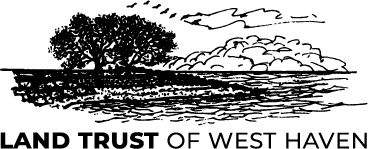Beach & Dune Ecosystems
What Are Beaches and Dunes?
Beaches
Beaches are transitional coastal landforms made of loose particles such as sand, gravel, and seashell fragments deposited by waves along the shoreline. Air currents create waves that move sand, continuously reshaping the coastline through natural processes like erosion and accretion. The beaches you see here differ from the many rocky intertidal areas found along Connecticut’s shoreline, which consist of hard, stable surfaces such as rocks or boulders. Unlike sandy beaches, rocky intertidal zones host organisms that cling to surfaces, such as barnacles and mussels, while sandy beaches tend to be home to burrowing species like clams and crabs. As transitional areas, beaches provide essential habitats for various species, including shorebirds and invertebrates, like crabs and clams.
Dunes
Dunes form when wind and water carry sand onto the beach, where it accumulates around barriers like sand fences and native plants. Over time, plants such as American beach grass (Ammophila breviligulata) stabilize these mounds with their extensive root systems, allowing dunes to grow in size. Dunes act as natural buffers against storms, protecting inland areas from wave energy and erosion. However, they are fragile systems, and trampling on beach grass or other vegetation can compromise their stability. Visitors are encouraged to use designated walkways to minimize harm.
Connecticut’s Unique Coastal Characteristics
Connecticut’s coastline along Long Island Sound is distinct from Atlantic-facing shores. Long Island acts as a natural barrier, shielding the coast from the intense water and wind currents experienced directly along the Atlantic Ocean. As a result of this lower-energy environment, dunes in Connecticut are smaller and less developed compared to those along higher-energy coastlines, such as Long Island’s south shore. Additionally, the variability in Connecticut’s coastal geology, influenced by past glaciation, creates a patchwork of smaller beaches rather than the expansive stretches of sand seen in other regions.
An Ecosystem Full of Life
Here at Eco Park, the beach and dunes are home to a variety of plant and animal communities, each adapted to survive in this challenging environment. The unique groups of species often occur in distinct zones:
Foreshore (Lower Beach)
The foreshore lies between the highest and lowest tide zones. This area is home to wrack lines—accumulations of seaweed, eelgrass, and other debris—which provide habitat for tiny invertebrates such as amphipods and polychaete worms (e.g., Nereis virens). Shorebirds like sanderlings (Calidris alba) and semipalmated plovers (Calidris pusilla) frequent the swash zone, feeding on these small creatures during migration.
Maritime Beach (Middle to Upper Beach)
This zone, located between the primary dune and the high tide line, is where sparse vegetation begins to take root, featuring plants that thrive in dry, salty, and shifting conditions. American beach grass often begins to establish here, alongside other species like sea rocket (Cakile edentula). Shorebirds such as piping plovers (Charadrius melodus) and least terns (Sternula antillarum), both federally endangered species, normally nest in this portion of the beach. (Nesting can be observed in nearby locations such as Sandy Point Bird Sanctuary and Milford Point.) Sadly, two other federally endangered species—the seabeach amaranth (Amaranthus pumilus) and the northeastern beach tiger beetle (Habroscelimorpha dorsalis dorsalis)—that relied on this habitat have since been extirpated from Connecticut.
Maritime Dunes
Dunes are classified by how mature and stable they are. Primary dunes are closest to the shoreline and consist mainly of American beach grass (Ammophila breviligulata). Secondary dunes, located further inland, are more stable and support a greater diversity of plants, such as beach heather (Hudsonia tomentosa), seaside goldenrod (Solidago sempervirens), and beach plum (Prunus maritima). These plant communities provide food and shelter for birds, insects, and other wildlife. Other notable species include state-listed short-eared owls (Asio flammeus) and diamondback terrapins (Malaclemys terrapin), which nest in this type of sandy beach area.
The Importance of Native Plants
Native plants play a critical role in the formation and stabilization of dunes. American beach grass (Ammophila breviligulata) is particularly vital due to its ability to trap wind-blown sand and promote dune growth. As accumulating sand buries the grass, it stimulates new growth, spreading a network of underground rhizomes that reinforce the dune’s structure. Many of the native plants in Eco Park, like Swamp Rose Mallow (Hibiscus moscheutos), Little Bluestem (Schizachyrium scoparium), and northern bayberry (Myrica pensylvanica), contribute to the ecosystem by providing habitat and food for wildlife.
Learn About Eco Park’s Native Plants
Threats to Beach and Dune Ecosystems
These ecosystems face numerous threats, including:
- Habitat Loss: Coastal development and recreational activities can destroy vital habitats for plants and animals.
- Invasive Species: Non-native plants can outcompete native vegetation, destabilizing dunes and reducing biodiversity.
- Climate Change: Rising sea levels, increased storm intensity, and shifting weather patterns accelerate erosion and disrupt ecosystems.
- Human Activity: Trampling on vegetation, off-road vehicle use, and unregulated pet access can damage these fragile habitats.
Protecting these areas requires collaborative efforts, such as habitat restoration, planting native species, and public education on minimizing human impact.
How You Can Help
You can support beach and dune ecosystems by:
- Staying on Walkways: Use designated paths to prevent trampling vegetation.
- Admiring Plants, Not Picking Them: It may seem harmless to pick a pretty flower, but in this delicate ecosystem, plants need every chance they have to reproduce!
- Reducing Erosion: Avoid removing natural debris, such as wrack lines, which help stabilize beaches.
- Participating in Cleanup Efforts: Join local initiatives to remove litter and invasive plants from coastal areas.
By understanding and protecting the intricate ecosystems of beaches and dunes, we can ensure their survival for generations to come. Eco Park invites you to explore and appreciate these dynamic landscapes while playing a role in their conservation.
Resources
Guide showcases geology, ecology, plants, and animals of CT shoreline | Connecticut Sea Grant – This guide offers an in-depth exploration of Connecticut’s shoreline, highlighting the role of Long Island Sound as a natural barrier and emphasizes the dynamic nature of these coastal ecosystems. It includes practical insights for understanding and conserving shoreline habitats.
A Virtual Tour of Long Island Sound Habitat | NY/CT Sea Grant & Long Island Sound Study – This interactive resource takes users on a virtual exploration of Long Island Sound’s diverse habitats, including beaches and dunes.
Beaches & Dunes | Adapt CT – This resource outlines the structure and function of beach and dune ecosystems, focusing on their role as natural barriers to storms and their importance for biodiversity. It offers guidance on restoring and managing these habitats in the face of climate change.
Long Island Sound Habitat Restoration Manual – This technical manual provides detailed guidance for restoring coastal habitats, including beaches and dunes. It covers the ecological value of these areas, common restoration challenges, and practical strategies for success.
Critical Habitats | CT DEEP GIS Open Data Website – This GIS-based resource maps and describes critical habitats across Connecticut, including beaches and dunes.
Endangered, Threatened, and Special Concern Species in Connecticut | CT DEEP – This resource catalogs the species in Connecticut that are at risk, including those dependent on beach and dune habitats.
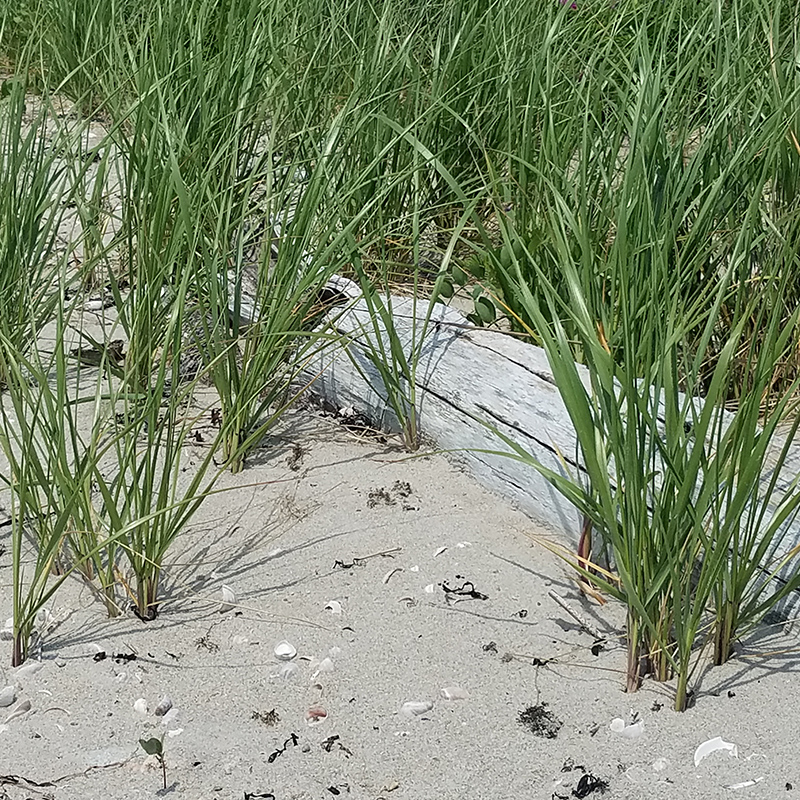
American Beachgrass (Ammophila breviligulata)
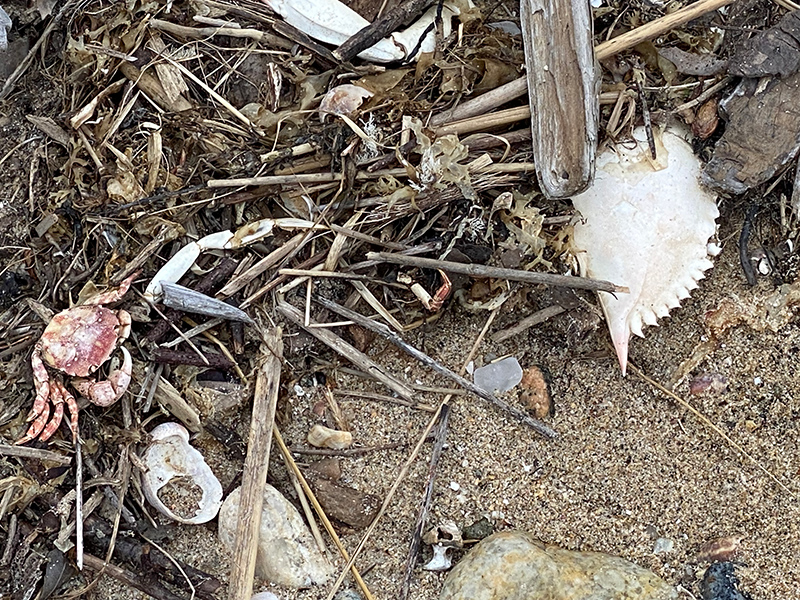
Wrack Line
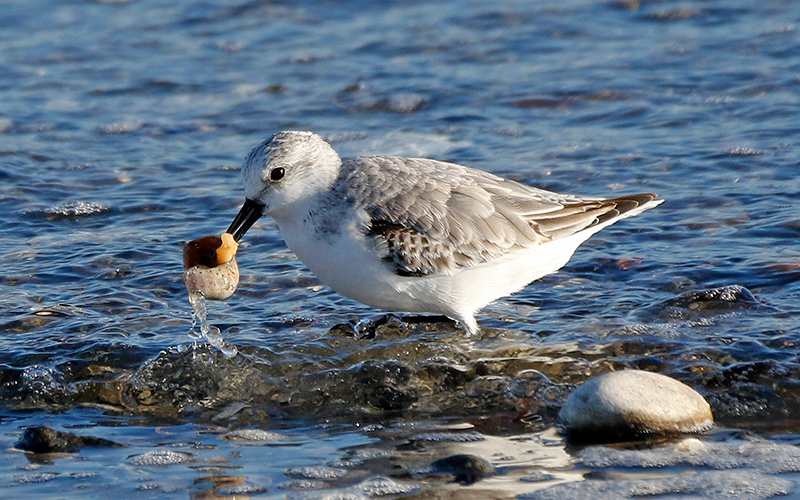
Sanderling (Calidris alba)
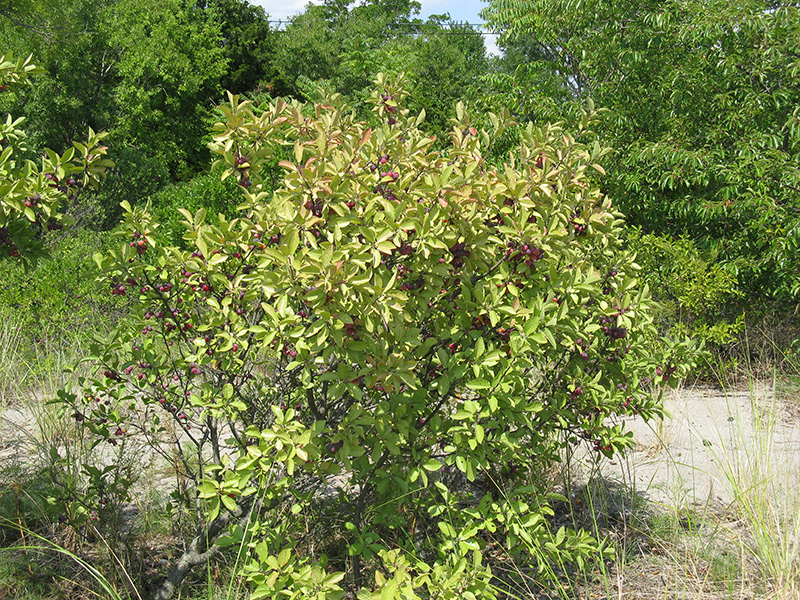
Beach Plum (Prunus maritima)
